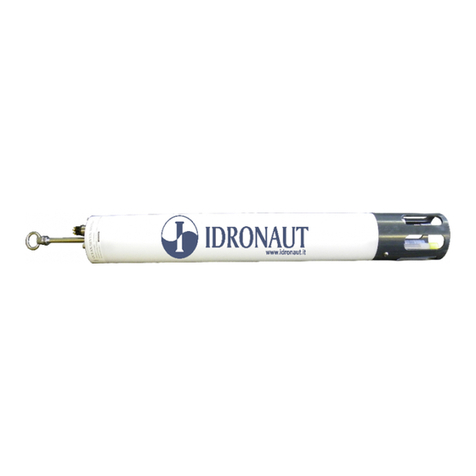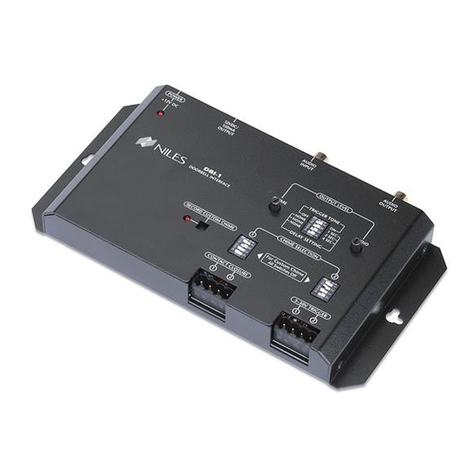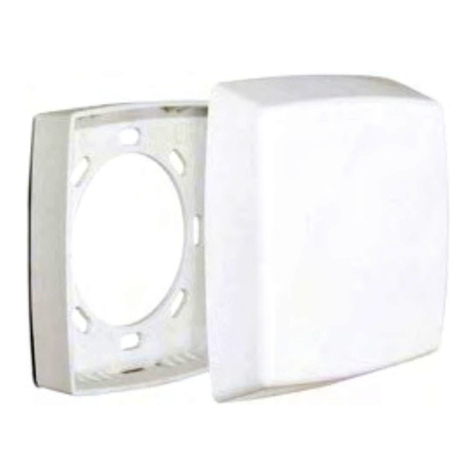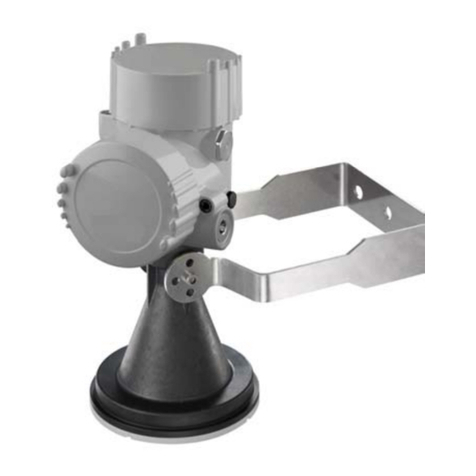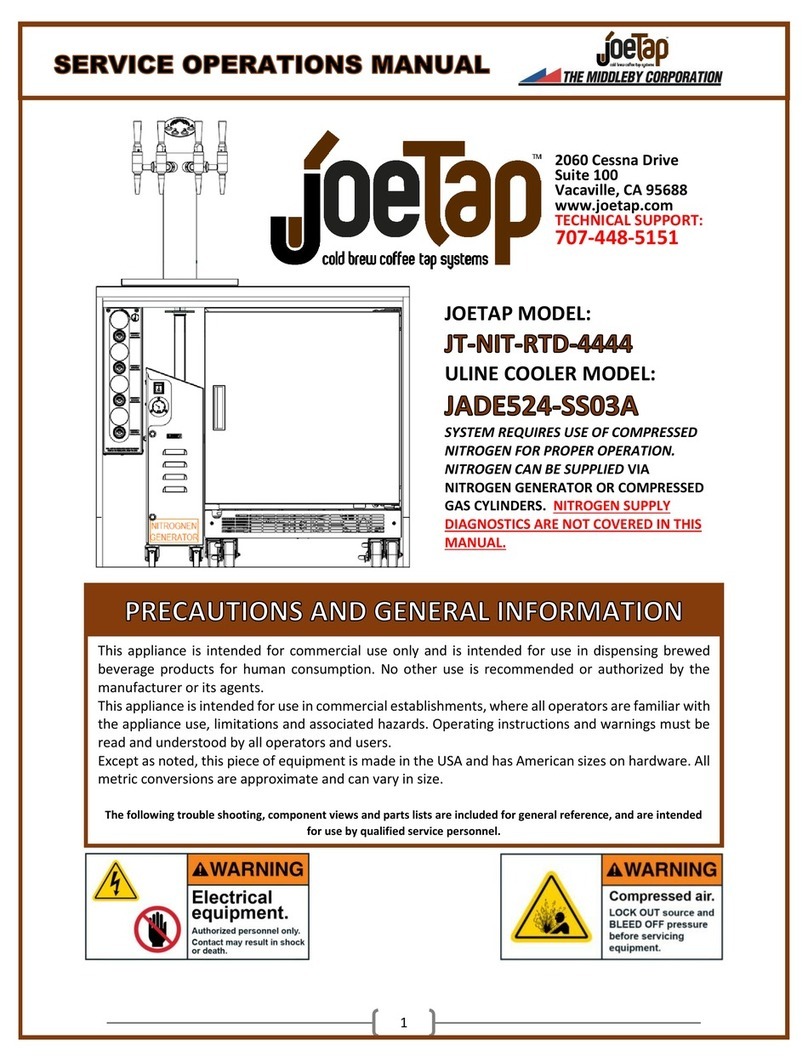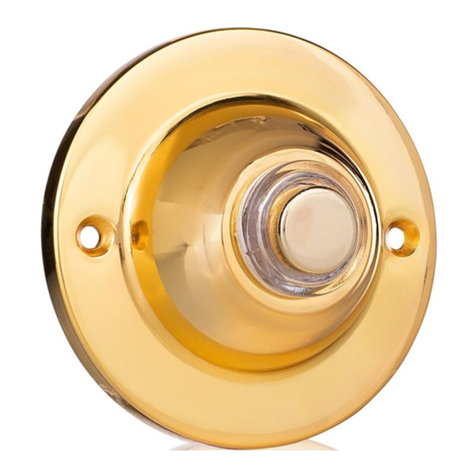Geoquip GeoZone A User manual

GeoZone ‘A’ Perimeter Security System
Installation Manual
GDALPHA SENSOR
AND GEOZONE ‘A’
Perimeter Protection System
from
Installation Manual
QA0609 Rev 3 – 16/12/2015
Prepared by: Paul Cook
Approved by: John Barratt

GeoZone ‘A’ Perimeter Security System
Installation Manual
All illustrations and sizes shown in this manual are
intended as a guide only, and do not form any part of any
contract between Geoquip Worldwide and its customers.
All specifications and designs shown in this manual are
subject to alteration by Geoquip Worldwide without notice
at any time.
Copyright © Geoquip (Worldwide) Ltd 2015
Foreword
This manual covers the installation, connection, commissioning and testing of the
GeoZone ‘A’ analyser designed by Geoquip Worldwide for perimeter fence protection.
It is designed as a simple stand alone detection device giving alarm and tamper
voltage-free contact outputs.
Who Should Use This Document?
All sections of the manual assume a basic knowledge of electrical installation
techniques.
Related Documents:
QA427 Multi-Zone Annunciator Operation Manual

GeoZone ‘A’ Perimeter Security System
Installation Manual
Contents
1 Introduction............................................................................. 1
1.1 General.....................................................................................................................................1
1.2 Principle of Operation.............................................................................................................1
1.3 Fundamentals of Perimeter Protection..................................................................................1
1.4 Climb-Over Detection..............................................................................................................2
1.5 Permissible Zone Lengths......................................................................................................2
1.6 Sensor Configuration Guidelines...........................................................................................2
1.7 Statement of Compliance........................................................................................................2
2 Site Survey............................................................................... 4
2.1 Pre-Installation Checklist........................................................................................................4
2.2 Calculating Sensor Length .....................................................................................................4
2.3 Electrical Interference.............................................................................................................4
3 Sensor Deployment................................................................. 6
3.1 General Handling.....................................................................................................................6
4 General Installation Methods ................................................. 8
4.1 Fence Sensor Placement........................................................................................................8
4.2 Fence Posts .............................................................................................................................8
4.3 Bi-Steel Posts ..........................................................................................................................9
4.4 Corner Posts............................................................................................................................9
4.5 Ground Level Variation.........................................................................................................10
4.6 Non-Sensitive Sections.........................................................................................................10
4.7 Sensor Installation.................................................................................................................11
4.8 Coping With Sensor Damage ...............................................................................................12
5 Chain Link Fences................................................................. 14
5.1 General...................................................................................................................................14
5.2 Fixing The Sensor..................................................................................................................14
6 Welded Mesh Fences............................................................ 15
6.1 General...................................................................................................................................15
6.2 Sensor Alignment.................................................................................................................. 15
7 Palisade Fences .................................................................... 17
7.1 Fence And Sensor Configuration......................................................................................... 17
7.2 Fixing The Sensor..................................................................................................................17
7.3 Allowing For Sensor Damage...............................................................................................18
7.4 Corner Posts..........................................................................................................................18
8 Gates...................................................................................... 19
8.1 General...................................................................................................................................19
8.2 Sensor Configuration............................................................................................................19
8.3 Single Gate.............................................................................................................................19
8.4 Double Gates ......................................................................................................................... 20
8.5 Sliding Gates.......................................................................................................................... 20
9 Sensor Terminations............................................................. 22
9.1 General...................................................................................................................................22
9.2 Sensor Termination............................................................................................................... 22
9.3 Impactor Kit Steel Glands.....................................................................................................23
9.4 Termination Boxes ................................................................................................................23
9.5 Termination Procedure .........................................................................................................23

GeoZone ‘A’ Perimeter Security System
Installation Manual
10 Sensor Testing.......................................................................25
10.1 General....................................................................................................................................25
10.2 Test Procedure.......................................................................................................................25
11 GeoZone ‘A’ Analyser ........................................................... 26
11.1 Analyser Installation..............................................................................................................26
11.2 Power Requirements .............................................................................................................26
11.3 Power Supply Cable...............................................................................................................26
12 Analyser Connections........................................................... 27
12.1 General....................................................................................................................................27
12.2 GDALPHA Sensor Cable Connections.................................................................................27
12.3 dc Power Supply....................................................................................................................27
12.4 Alarm and Tamper Outputs...................................................................................................28
12.5 Ground Stud Connection.......................................................................................................28
13 Controls and Indicators ........................................................ 29
13.1 Sensitivity Adjustments.........................................................................................................29
13.2 Climb Sensitivity....................................................................................................................29
13.3 Cut Sensitivity........................................................................................................................30
13.4 LED Indicators........................................................................................................................30
14 Commissioning......................................................................32
14.1 Inspecting the System...........................................................................................................32
14.2 Analyser Testing ....................................................................................................................32
14.3 Adjusting the Analyser ..........................................................................................................32
14.4 Adjusting For Fence Cut-Through Detection.......................................................................32
14.5 Adjusting For Climb-Over Detection....................................................................................32
14.6 Testing The System ...............................................................................................................33
15 Fault Finding..........................................................................34
15.1 Installation Related Problems...............................................................................................34
15.2 Sensor Related Problems......................................................................................................34

GeoZone ‘A’ Perimeter Security System
Installation Manual
Page 1
1 Introduction
1.1 General
The GeoZone ‘A’ system is a simplified advanced perimeter intrusion alarm system
based on a microphonic sensor. The sensor is attached to the perimeter fence and
detects intruders attempting to climb over or cut through the fence.
The GeoZone ‘A’ family comprises:
The GeoZone ‘A’ analyser.
The GDALPHA sensor cable.
GQCOMBO end-of-line termination box.
On manned sites the alarm and tamper outputs can be connected to third party alarm
panels or our multi-zone annunciator (part numbers GW6ZA and GW12ZA). These
provide zone disable facility and led indication of alarm status. See QA427 Multi-Zone
Annunciator Operation Manual for details of the annunciators.
There are four stages to the installation of the GeoZone ‘A’ system.
Install the sensor cable.
Install the analyser.
Install the end-of-line box.
Install the service cable.
1.2 Principle of Operation
The GDALPHA sensor detects the vibrations caused by an attempted intrusion as the
perimeter fence is either cut through or climbed over and converts them into electrical
signals which are processed by an analyser. This, in turn, decide whether the signals
constitute an attempted break-in and, if so, an alarm signal is activated. The relay
output is normally connected to some form of annunciator unit which, in turn, operates
alarm bells or other indicators.
Care must be taken to ensure that the sensor is positioned and fixed correctly to
enable it to respond to the vibrations caused by an intrusion. The sensor must be fixed
to the fence as closely as possible so that the maximum amount of signal is generated
by the sensor in response to the intrusion attempt. The installation notes in this manual
are designed to ensure that, as far as possible, the above conditions are satisfied.
Most problems experienced on site stem from a lack of understanding of the principle
of operation of the system and consequential installation errors. It is vital that this
manual is thoroughly read and understood prior to system installation.
1.3 Fundamentals of Perimeter Protection
The prevention and detection of an intrusion onto a site depends on the installation of
an adequate physical barrier in combination with an appropriate sensor system.
Together they can alert the operator to the presence of unacceptable levels of
perimeter activity and assist in the decision to activate an alarm.
Without a sensor system any barrier is unintelligent and cannot be used to warn when
there is an intruder activity; on the other hand the best sensor system cannot provide
intruder detection unless it is properly attached to a suitable barrier, which can serve as
a fundamental component towards giving the system its maximum detection capability.
Perimeter protection should therefore be designed as a combination of appropriate
fence construction and sensor system to achieve the pre-determined expectations for
intruder detection.

GeoZone ‘A’ Perimeter Security System
Installation Manual
Page 2
GDALPHA sensor will meet these expectations when correctly installed on any fence
constructed so that it causes an intruder to generate a level of vibration or resonance
which can be detected by the sensor within the range of sensitivity settings.
IMPORTANT
The most critical feature of any GeoZone ‘A’
system is the quality of the sensor installation
1.4 Climb-Over Detection
To achieve climb over detection the vibration of the fence fabric must last for
approximately four seconds. Due to this, experience has shown that, generally, climb
over detection can only be reliably achieved on fences that are a minimum of 2.4 m in
height.
On fences lower than this climb over detection can be enhanced by the addition of a
barbed wire or razor coil topping. This slows the intruder's progress, thus increasing
the duration of the vibrations to such a level that they can be detected by the sensor.
1.5 Permissible Zone Lengths
The optimum installation is a zone length of 100m on a fence of up to 2.4 m high but,
subject to risk analysis and important factors such as fence type and quality, terrain,
camera capability, personnel deployment and alarm response, under suitable
conditions zone lengths of up to 200m can be achieved.
1.6 Sensor Configuration Guidelines
The following variables in the fence construction will affect the sensor performance, the
probability of detection of climb over and cut through and the level of interference from
extraneous causes:
Height of fence
Tension of the fence fabric
Setting of the fence base in concrete
Gauge of metal used in fence fabric
Resonance of the fence
Additional bracing or supports
Plastic or galvanised coating
Method of intrusion
The table below provides guidance on suggested sensor configurations on common
fence constructions for heights up to 2.4 m.
Type of Fence
Double Run
Single Run
Chain Link Light gauge (2 mm)
Medium gauge (3 mm)
Heavy gauge (4 mm+)
1.7 Statement of Compliance
The equipment described in this manual complies with all relevant sections of EMC
Directive 89/336/EEC introduced in January 1996.
Specifically, the equipment has been tested to the following standards:

GeoZone ‘A’ Perimeter Security System
Installation Manual
Page 3
BSEN 50130-41995+A1:1998+A2:2003
BSEN 55016-2-3: 2006
BSEN 61000-6-3:2007
BSEN 61000-4-2:1995 + A1 & A2
BSEN 61000-4-3:2002 + A1
BSEN 61000-4-4:1995 + A1 & A2
BSEN 61000-4-5:1995 + A1 & A2
BSEN 61000-4-6:1996 + A1 & A2
While the system complies with the standards listed above, it is still possible that
certain high level interference sources can have an adverse effect on the system
performance. The guidelines detailed later in this manual should be followed to
minimise such problems.
A technical report detailing these tests and procedures is available from Geoquip
Worldwide on request.
Additionally, to satisfy the requirements for CE marking of the product, the equipment
complies with all other relevant standards for this type of equipment.

GeoZone ‘A’ Perimeter Security System
Installation Manual
Page 4
2 Site Survey
2.1 Pre-Installation Checklist
To ensure that the condition of the fence does not compromise the performance of the
GDALPHA, the following checklist should be studied and any necessary repair work
carried out on the fence line prior to commencement of the installation.
1. Ensure that the fabric of the fence is intact and continuous. Areas which have
suffered corrosion damage, vandalism, vehicle damage, or other deterioration,
must be replaced or repaired.
2. Ensure that the same fabric type is used throughout each zone. Sections of
different types of fabric will produce different responses, making it difficult to
optimise the system settings.
3. Ensure that posts are firmly fixed in the ground and that the fence fabric is well
supported and not liable to sag or chafe against the posts in bad weather.
4. Ensure that there are no overhanging branches of trees in contact with the
fence and that the fence line is generally free from vegetation which can muffle
vibrations caused by intrusion attempts.
5. Ensure that metalwork fixed to the fence such as signs or outriggers are firmly
fixed and do not vibrate or rattle in bad weather conditions.
6. Ensure that gates are secured so that they cannot rattle when closed.
IMPORTANT
In general, any fence movement which can cause metal
to metal contact is a potential source of false alarms.
Efforts should be directed at eliminating,
as far as possible, all such causes.
2.2 Calculating Sensor Length
The length of sensor required for each zone can be calculated as follows:
This example assumes a 150m zone.
Length of zone
150m
(A)
Add sensor for posts (5% of A)
10m
(B)
7 m per corner =
(C)
Double Leaf Gate (4 x Gate width) =
(D)
Single Leaf Gate (4 x Gate width) =
(E)
Total Sensor Required =
A+B+C+D+E
2.3 Electrical Interference
When planning the location of sensor runs, care must be taken to avoid placing the
sensor close to sources of electrical interference, particularly any device which may
produce alternating magnetic fields. Such devices include motors, contactors,
transformers, and power cables carrying large currents.
Normally the sensor will reject such stray interference however, if the interference is
sufficiently strong, false alarms may be produced. Power cables which are steel wire

GeoZone ‘A’ Perimeter Security System
Installation Manual
Page 5
armoured are sufficiently well screened by the armouring to minimise any interference
problem, but it is good practice to allow a separation between the sensor and the
power cable of at least 1 m. Sensor running parallel to power cables for distances
greater than a few metres must be avoided.
Particularly powerful sources of electrical interference include electrified rail lines and
electric fence units, the supply wiring of which tend to radiate broad band electrical
interference.

GeoZone ‘A’ Perimeter Security System
Installation Manual
Page 6
3 Sensor Deployment
IMPORTANT
All personnel involved with installation of sensor must understand that it is a
sensitive vibration detection device and is to be handled accordingly.
3.1 General Handling
1. In general the sensor is removed from a reel by placing a pole through the reel
and unwinding it by rotating of the reel. Failure to do this will allow kinks to form
in the sensor that will cause internal damage. Figure 1 shows this method of
deploying sensor prior to fixing to the fence. Ensure that the sensor is not
subjected to jerking or tugging whilst being wound off the reel. Note that two
people will be required when dealing with large reels of sensor.
Figure 1
2. Sensor deployed and ready for fixing to a fence must be protected from
damage by persons walking on the sensor or vehicles driving over the sensor.
Figure 2 illustrates typical maltreatment of sensor which must not occur. Sensor
subjected to such treatment will be damaged beyond repair and will prove
costly to replace as sensitivity can only be verified after attachment to the fence.
Figure 2

GeoZone ‘A’ Perimeter Security System
Installation Manual
Page 7
3. When fixing sensor to fences, the tightest bend radius of the sensor must not be
less than 100 mm (4"). Note that this applies to the bend radius after
installation. Refer to Figure 3.
When it is necessary to pull the sensor round bends during the installation
process, the bend radius must be sufficiently large to avoid exceeding the
maximum permissible tension as described in the next paragraph.
Figure 3
4. The maximum tension which can be applied to the sensor must not exceed 6kg.
Tension in excess of this can cause internal sensor damage which may not be
obvious from the condition of the outer sheath. Refer to Figure 4.
Figure 4

GeoZone ‘A’ Perimeter Security System
Installation Manual
Page 8
4 General Installation Methods
4.1 Fence Sensor Placement
The fence fabric is normally fixed on the outside of the fence post away from the
protected area. For fence posts with cranked tops, the crank is designed to face
towards the outside of the site, although in some cases it will be found that the reverse
is the case.
Install the sensor to the inner face of the fence fabric which offers slightly greater
protection against casual vandalism. The sensor must be looped around the inner side
of each fence post and not pulled between the post and the fabric.
If the fence fabric is on the inside face of the posts, the sensor can be installed on the
flat face of the fence. However, it should be noted that in this configuration climb over
detection is virtually impossible as the posts provide additional insulation from fence
fabric contact.
The optimum height for mounting the sensor is 1.0 m above ground level. This offset
towards the lower half of the fence provides better detection of cut through intrusion,
which is more likely to occur on the lower areas of the fence. See Figure 5.
Figure 5
4.2 Fence Posts
When the sensor passes around a fence post, it is necessary to leave sufficient slack
so that normal movement of the fence fabric does not cause the sensor to chafe
against the edges of the post. This is particularly important with concrete posts. It is
equally important not to leave excessive slack which can be shaken by strong winds
and cause false alarms. Figure 6 shows recommended spacing between the cable tie
nearest the post and the edge of the post for both concrete and metal posts. For
concrete posts, typically 90 mm x 100 mm in cross-section, dimension 'A' should be not
less than 100 mm. For metal posts, typically 50 mm x 50 mm in cross-section,
dimension 'B' should be not less than 75 mm. It is important to allow the sensor to form
a smooth curve as it passes round the inside of the fence post.

GeoZone ‘A’ Perimeter Security System
Installation Manual
Page 9
Figure 6
4.3 Bi-Steel Posts
If 'Bi-Steel' posts are used to support weld-mesh fences, it may be possible to pass the
sensor through the post assembly and thus avoid the need to form a loop round the
post. This is provided that the sensor is pulled off the reel using a proprietary de-reeler
and not laid out as shown in Figure 1.
4.4 Corner Posts
Corner posts are usually braced with strainer posts making it easier for an intruder to
climb over without causing as much vibration as at other points.
Configure the sensor as shown in Figure 7. This will improve the probability of
detection of intrusion at the corners.
Figure 7

GeoZone ‘A’ Perimeter Security System
Installation Manual
Page 10
4.5 Ground Level Variation
It will often be found that, because of variations in ground level, the fence panels may
be stepped up or down at support posts to eliminate gaps below the fence, or the need
to trench out high spots between the posts. When this happens, it is necessary to allow
the sensor to follow the steps to maintain the correct average height above the ground
level.
Figure 8 shows the line of the sensor following the ground contours using smooth
bends in the sensor at each step.
Figure 8
4.6 Non-Sensitive Sections
In many cases, there will be areas within a sensor zone where, for various reasons, it is
not necessary or desirable to provide active sensor coverage.
For instance, if a zone is split by a building or other obstruction, a section of dead cable
can be inserted in the zone at this point to be re-connected to the sensor at the other
side of the obstruction. Another application of dead cable would be to provide an
interconnection between sensor on a fence zone and an analyser mounted remotely
from the fence, perhaps in a building or other protected area.
The correct dead cable is available from Geoquip Worldwide, part number GQFC-9.
This cable comprises an overall drain wire and a twisted pairs of wires with a foil
screen. The cable has a tough black polythene outer sheath making it weather
resistant and fully suitable for outdoor use. This cable is not suitable for direct burial.
The junction between the sensor and the dead cable is made within a weather-proof
GQCOMBO junction box. This junction box provides an integral tamper switch to force
a sensor tamper condition if the lid is removed; see figure 9.
Provided that the cables are terminated correctly and moisture is excluded from the
joint, almost any number of such sections can be inserted in a zone.

GeoZone ‘A’ Perimeter Security System
Installation Manual
Page 11
Figure 9
4.7 Sensor Installation
The following general recommendations apply to most types of perimeter fence and
must be adhered to when installing GDALPHA sensor.
IMPORTANT
Sensor terminations must only be fitted after installation of the sensor
on the fence. Ensure that cut ends of sensor are sealed against moisture
until such terminations are fitted. Use the heat shrink boots supplied with
each reel of sensor.
1. Starting at either the beginning or end of the zone, fix the free end of the sensor
to the fence. Leave sufficient spare sensor at the end of the zone to make the
terminations.
2. Place a length of tube or rod through the centre of the sensor reel and walk
towards the other end of the zone while paying the sensor off the reel and
allowing it to lie on the ground. Refer to Figure 1. Rotate the drum whilst
walking.
3. Ensure that sufficient slack sensor is left on the ground to accommodate loops
round fence posts, as shown in Figure 1 and corner post configuration, as
shown in Figure 7.
4. At the end of the zone, leave the reel and any remaining sensor on the ground
until fixing of the sensor to the fence is completed. Do not cut off any remaining
sensor as extra may be required as fixing progresses. Once the sensor has
been deployed on the ground, it can be fixed to the fence fabric.

GeoZone ‘A’ Perimeter Security System
Installation Manual
Page 12
5. Starting at the end of the zone that is already fixed to the fence, walk along to
each fence post and lift the sensor up to the required height. Loosely place a tie
wrap round the sensor and fence at the side of each post but do not tighten at
this stage. Continue to the other end of the zone so that the sensor is hanging
loosely along the final line to which it will be fixed. Ensure that sufficient slack is
left at corners.
6. Return to the fixed end. Work towards the other end of the zone placing
intermediate ties every 200mm around the sensor and fence and manually
tightening them up. Do not use tie wrap guns as these cause the tie wraps to
break. Having the sensor supported at each post will make the task of placing
the sensor and tensioning the intermediate ties much easier.
7. Once all the tie wraps are in place cut the excess tail off the tie-wrap using side
cutters ensuring that the sensor sheath is not damaged. Leave approximately
6mm of the tail protruding to allow for any slippage in the tie after tightening.
4.8 Coping With Sensor Damage
In the event that damage, whether accidental or intentional, is inflicted on the sensor,
the damaged section must be replaced with a new short section. This should be
inserted using GQCOMBO junction boxes at either end to ensure proper connections.
Figure 10 shows the arrangement of the damaged sensor replaced with a new section.
Figure 10

GeoZone ‘A’ Perimeter Security System
Installation Manual
Page 13
If sensor damage has occurred, resulting in exposure of the inner conductors of the
sensor to the effects of rain or moisture for a period exceeding a few days, it is
advisable to cut out a section of sensor at least 5m on either side of the damage to
eliminate the effects of moisture penetration due to capillary action.
The new section of sensor can be prepared off site using the following method and
moved into place when completed.
1. Terminate the ends of a suitable length of sensor as described in Section 8.2.
2. Loosen the glands on the boxes and pass the sensor end into the box so
sufficient length is available on the tails to be wired to the terminal blocks.
Ensure that the sensor is passed through the correct gland to correspond to the
position of the terminal block, i.e. through the left gland to connect to the left
terminal block at the right hand end of the sensor and vice versa at the left end.
Tighten the gland by hand so that the rubber sealing ring grips the sensor
jacket.
3. Connect the sensor tails to the terminal blocks. Figure 9 shows sensor wired to
the left hand terminal block of a junction box.
4. Cut off the damaged section of sensor from the fence and terminate the ends of
the remaining sensor in the same manner as above. To ensure that no moisture
enters the open ends, this step should only be carried out immediately prior to
fixing the new section.
5. Position the boxes just above the line of the sensor to allow rain water to run
away from the glands and fix to the fence using the mounting kit provided.
Ensure that the new section of sensor is at the same height and tension as the
original. Do not over tighten the screws on the mounting bars as in extreme
circumstances this can cause distortion of the weatherproof seal arrangement.
6. Connect the tails of the fence mounted sensor to the junction box terminal
blocks.
7. Replace the box lids, taking care not to over-tighten the lid screws and verify
that the tamper switch in each box operates by listening for the click of the
switch action when the lid is screwed down. Re-test the entire zone to ensure
that the sensor detects simulated cut and climb attacks.

GeoZone ‘A’ Perimeter Security System
Installation Manual
Page 14
5 Chain Link Fences
5.1 General
Chain-link fences represent the most widely used type of perimeter fence, on both new
and existing installations. Since they are so widely used, and in many cases will have
been installed before the perimeter intrusion system, the fences may be in less than
perfect condition. Therefore it is imperative that the site survey described in Section 2.1
is carried out prior to the sensor installation.
5.2 Fixing The Sensor
IMPORTANT
Never fix sensor to the strainer wires of chain-link fencing because
there is insufficient mechanical contact between the strainer wire
and the fence for the sensor to be able to detect vibrations occurring
on the fence itself.
When attaching sensor place the ties round the natural depression formed by the links
of the fence at the points where they fold over each other. By attaching the sensor at
every third such crossing the fixings will be the recommended 200mm apart, as shown
in Figure 11.
Figure 11
For more details on the sensor fixing procedure see Section 4.8.

GeoZone ‘A’ Perimeter Security System
Installation Manual
Page 15
6 Welded Mesh Fences
6.1 General
Welded mesh fences are frequently used on sites requiring a higher degree of
protection than can be offered by chain-link fences. Welded mesh fences are generally
harder to climb over and require more cuts before a hole sufficiently large enough to
permit an intruder to pass through can be made.
Typical welded mesh fence construction comprises 3 mm diameter steel wire welded
into a grid configuration with a horizontal spacing between the wires of 75 mm and a
vertical spacing of 25 mm. The usual finish is plain galvanised coating. The fencing is
produced in panels approximately 2.4 m high by 3 m wide and is erected on metal
posts. All of the following recommendations apply to this type of fence.
IMPORTANT
If a welded mesh fence of radically different construction to that
described above is encountered, contact Geoquip Worldwide
for further advice before installation commences.
As with chain link fences it is imperative that the site survey described in Section 2.1 is
carried out prior to the sensor installation.
6.2 Sensor Alignment
Study the fixing of the welded mesh panels to the posts and note on which the side of
the fence the horizontal elements are located. Installation of the sensor on the same
side of the fence as the horizontal wires will result in a much neater arrangement of the
sensor and is to be preferred if possible.
If the horizontal wires are on the outer side of the fence, this will mean fixing the sensor
to the outside of the fence which may not be acceptable to the client. If this is
acceptable it is important to position the cable ties as shown in Figure 15.
Figures 12 and 13 show the ideal configuration whereby the sensor is fitted on the
same side as the horizontal wires.
Figure 12 Figure 13
Figures 14 or 15 show the alternative arrangement whereby the sensor is fitted on the
opposite side to the horizontal wires.

GeoZone ‘A’ Perimeter Security System
Installation Manual
Page 16
Figure 14 Figure 15
For more details on the sensor fixing procedure see Section 4.8.
This manual suits for next models
1
Table of contents
Popular Accessories manuals by other brands

Smartwares
Smartwares 10.043.79 quick start guide

Halsey Taylor
Halsey Taylor HVR8HD Series owner's manual
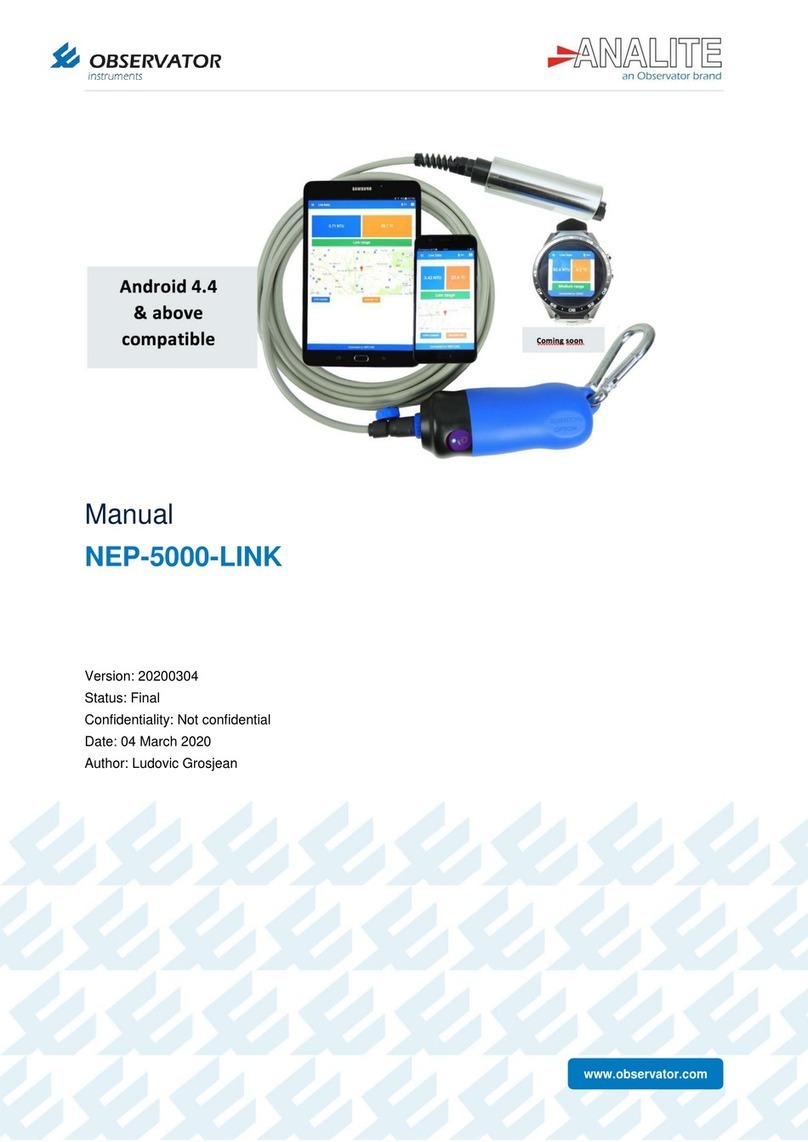
Observator Instruments
Observator Instruments ANALITE NEP-5000-LINK manual
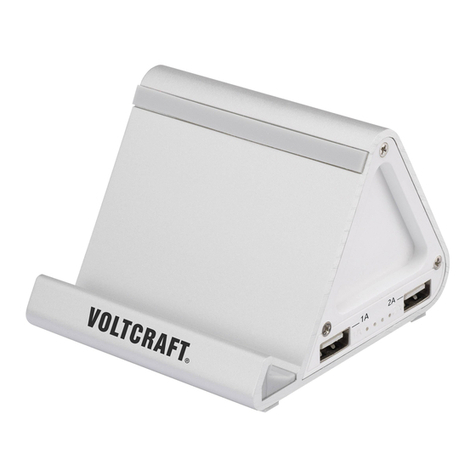
VOLTCRAFT
VOLTCRAFT PB-10 operating instructions
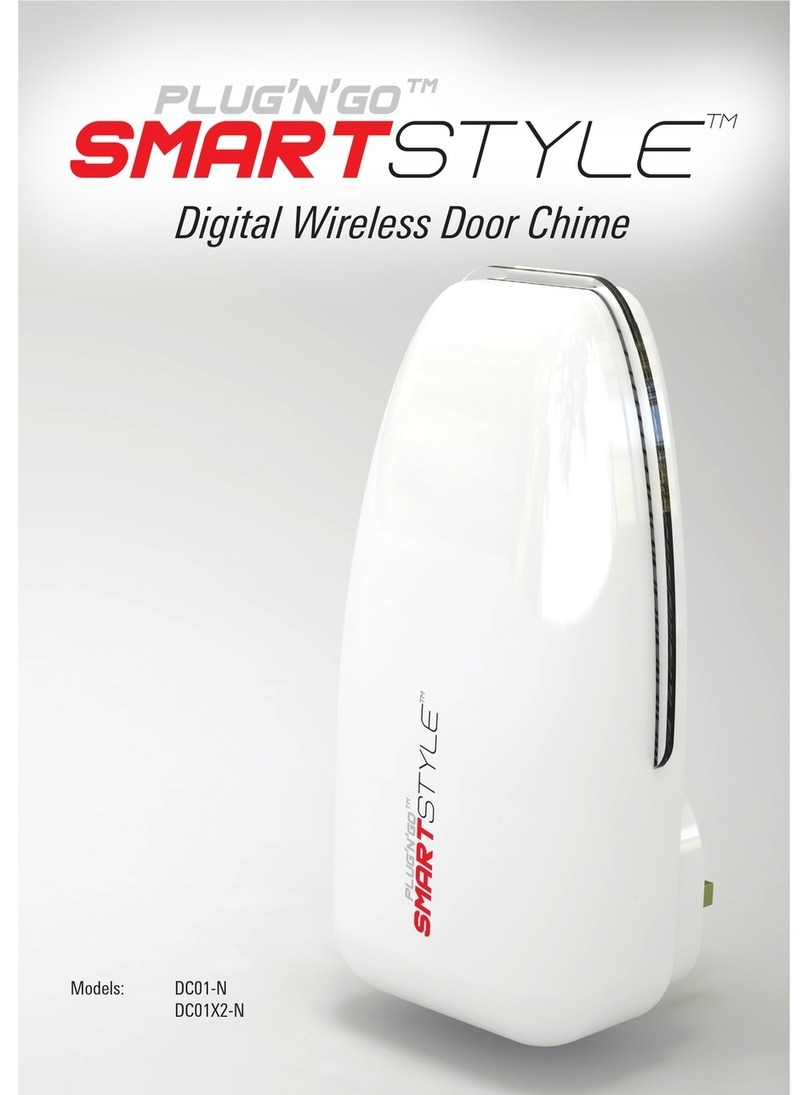
Plug'n'Go
Plug'n'Go SmartStyle DC01X2-N manual
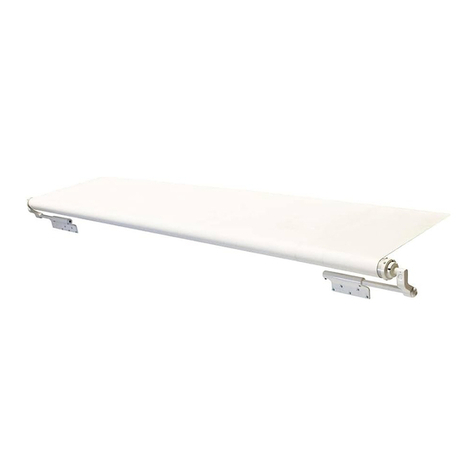
Lippert
Lippert Solera 5000 Series owner's manual

